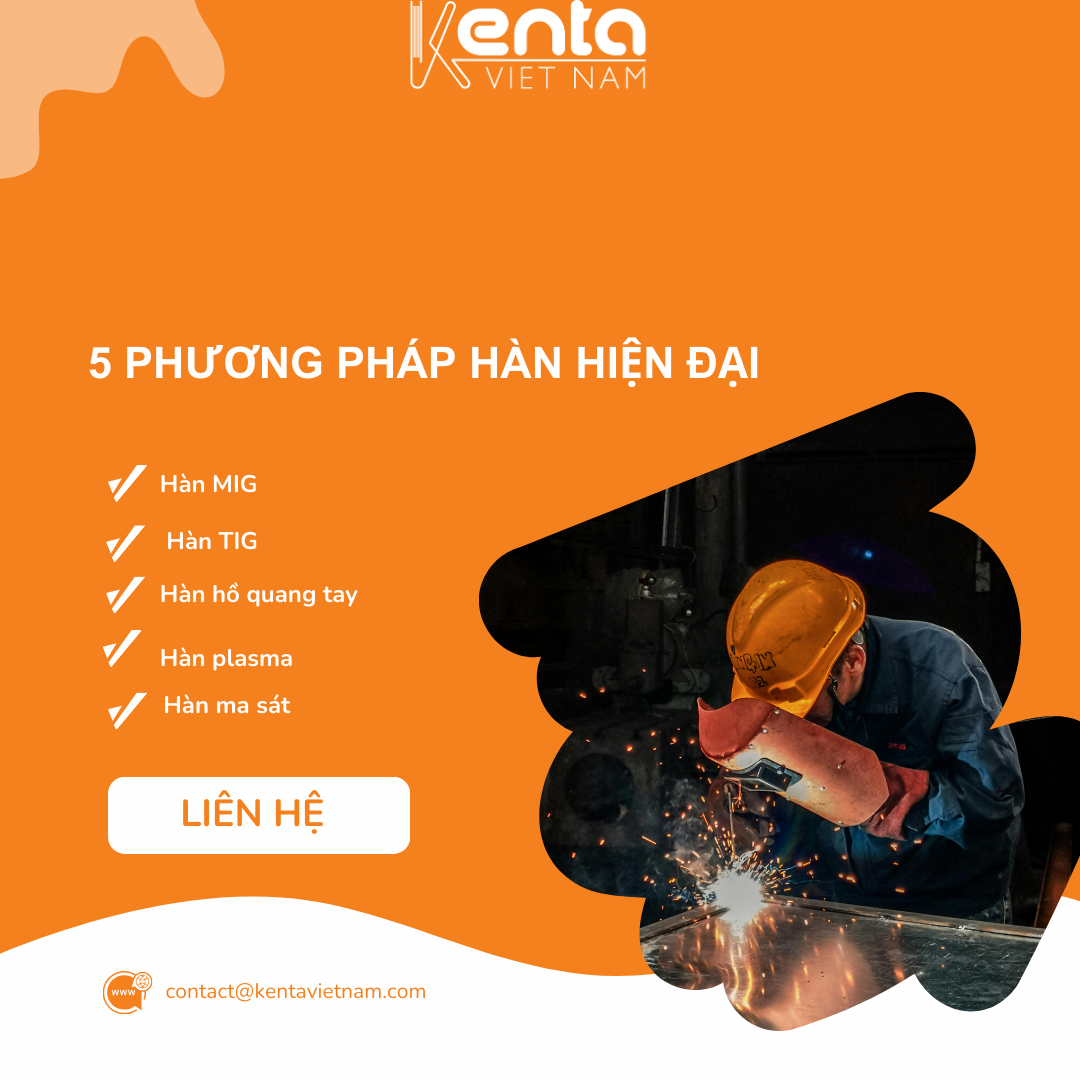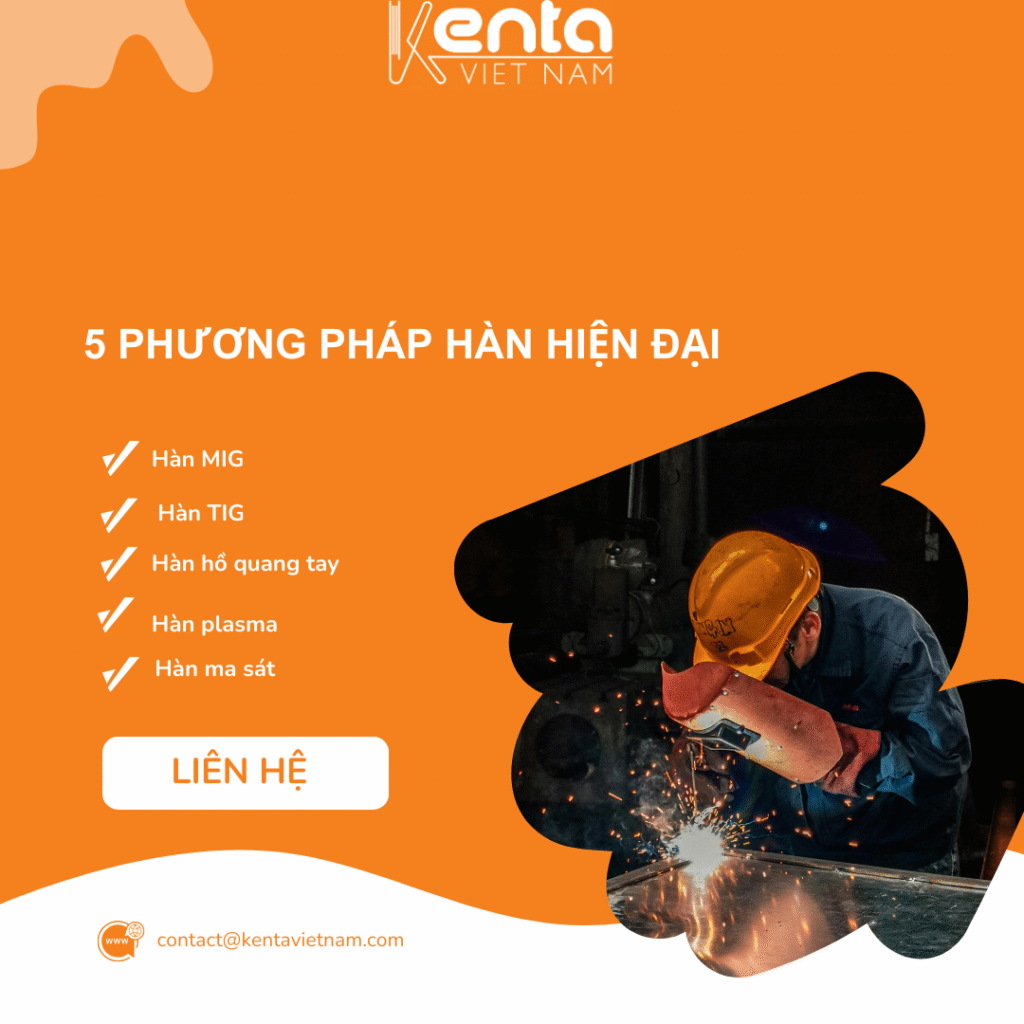Knowledge, Technology
5 Modern Welding Methods – Optimized for Metal Fabrication
In the field of machining and metal fabrication, welding methods play an extremely important role in creating strong, aesthetically pleasing, and technically compliant joints. The development of modern technology has led to the emergence of many advanced welding methods , helping to improve production efficiency, save time, and reduce costs. Below are 5 modern welding methods that are widely used in industry today.
1. MIG Welding (Metal Inert Gas)
MIG welding is one of the most popular welding methods today in the metal fabrication and repair industry. MIG welding uses a continuous wire electrode and an inert gas (usually Argon or an Argon-CO2 mixture) to protect the weld area from air contamination.
Advantages:
- Easy to learn, easy to operate.
- High productivity, suitable for mass production.
- Beautiful welds, less spatter.
- Can weld many types of materials: steel, stainless steel, aluminum…
Disadvantages:
- Relatively high equipment cost.
- Difficult to use in windy areas (outdoors) due to the influence on the shielding gas.
2. TIG Welding (Tungsten Inert Gas)
TIG welding is a more advanced welding methods , using a non-consumable tungsten electrode and an inert gas (usually Argon) to create precise and high-quality welds.
Advantages:
- Strong, beautiful, precise welds.
- Suitable for thin metals and difficult materials such as stainless steel, aluminum, titanium…
- No slag produced.
Disadvantages:
- Slow welding speed.
- Requires high technical skill.
- Higher investment and operating costs than MIG welding.
3. Shielded Metal Arc Welding (SMAW)
Also known as stick welding,this is a traditional welding methods that uses a flux-coated electrode to create an electric arc, melting the metal and the electrode to form a weld.
Advantages:
- Simple equipment, low cost.
- Suitable for harsh working environments (outdoors, where there is no shielding gas).
- Flexible, can weld in many different positions.
Disadvantages:
- Low productivity due to frequent electrode changes.
- Welds produce slag, requiring cleaning after welding.
- Difficult to create beautiful and stable welds if the welder is inexperienced.
4. Plasma Arc Welding

Welding method: plasma uses a plasma arc to melt the metal at the welding point. This technology is developed from TIG welding, but the arc is stronger and more concentrated.
Advantages:
- Extremely precise, beautiful, high-quality welds.
- Suitable for automation and robotic welding.
- Less thermal distortion due to high energy concentration.
Disadvantages:
- Very high equipment and operating costs.
- Requires high technical expertise and is often used in specialized industries such as aerospace, medical…
5. Friction Welding
Friction welding is a more advanced welding methods that does not use heat from an arc but uses friction to generate heat to melt the surface of the parts, thereby joining them together.
Advantages:
- Extremely strong welds, no impurities.
- No need for filler material or shielding gas.
- High automation, energy saving.
Disadvantages:
- Only applicable to parts with circular or symmetrical shapes.
- Expensive equipment and not yet common in Vietnam.
Conclusion
The choice of the correct welding methods welding method depends on many factors such as material type, thickness, technical requirements, investment cost, and working environment. In the context of increasing industrialization and automation, businesses should update and apply modern welding methods to improve product quality, reduce costs, and optimize production processes.
If you are looking for welding equipment or advice on choosing a suitable welding methods please contact Kenta VietNam – a unit specializing in providing comprehensive technical solutions for the mechanical processing and manufacturing industry.




















